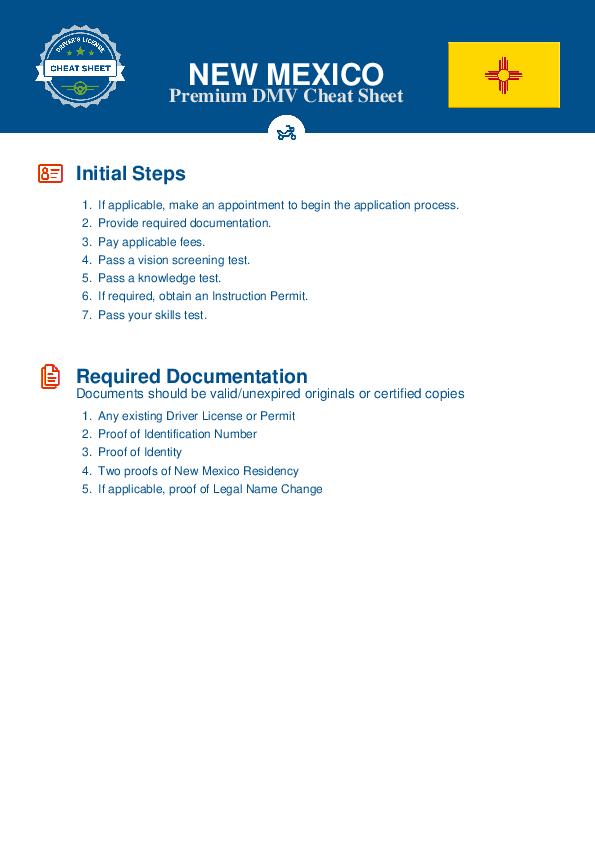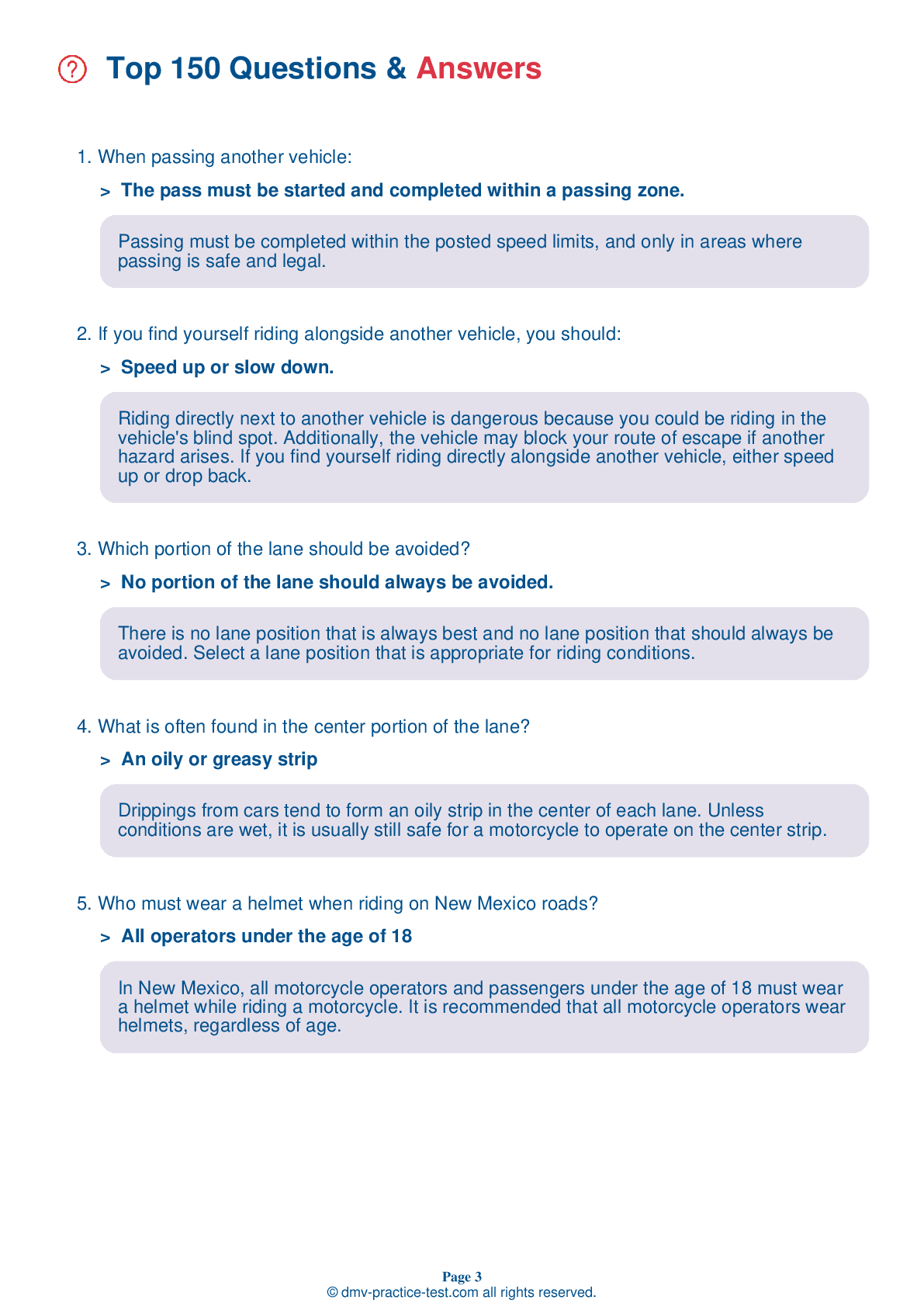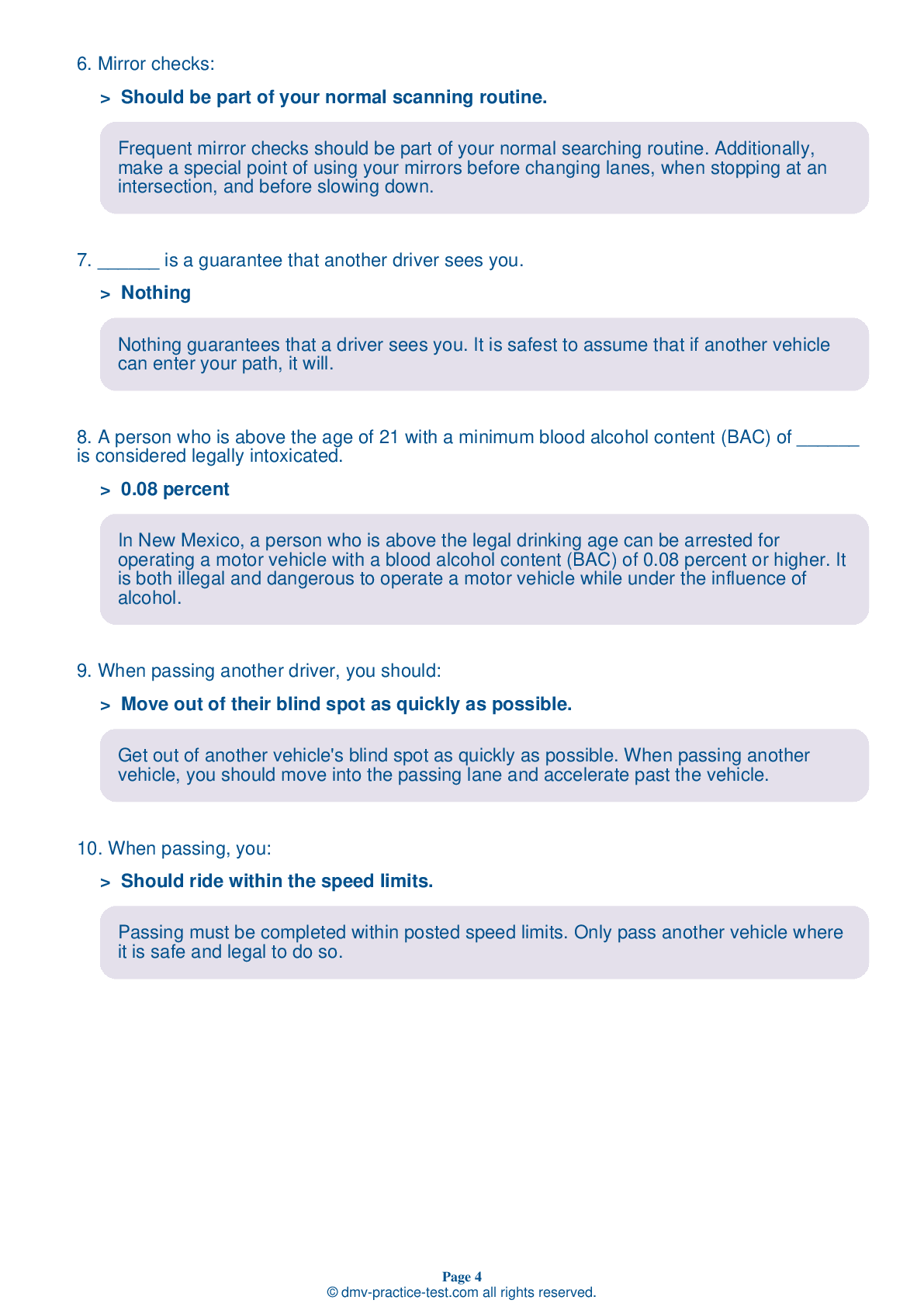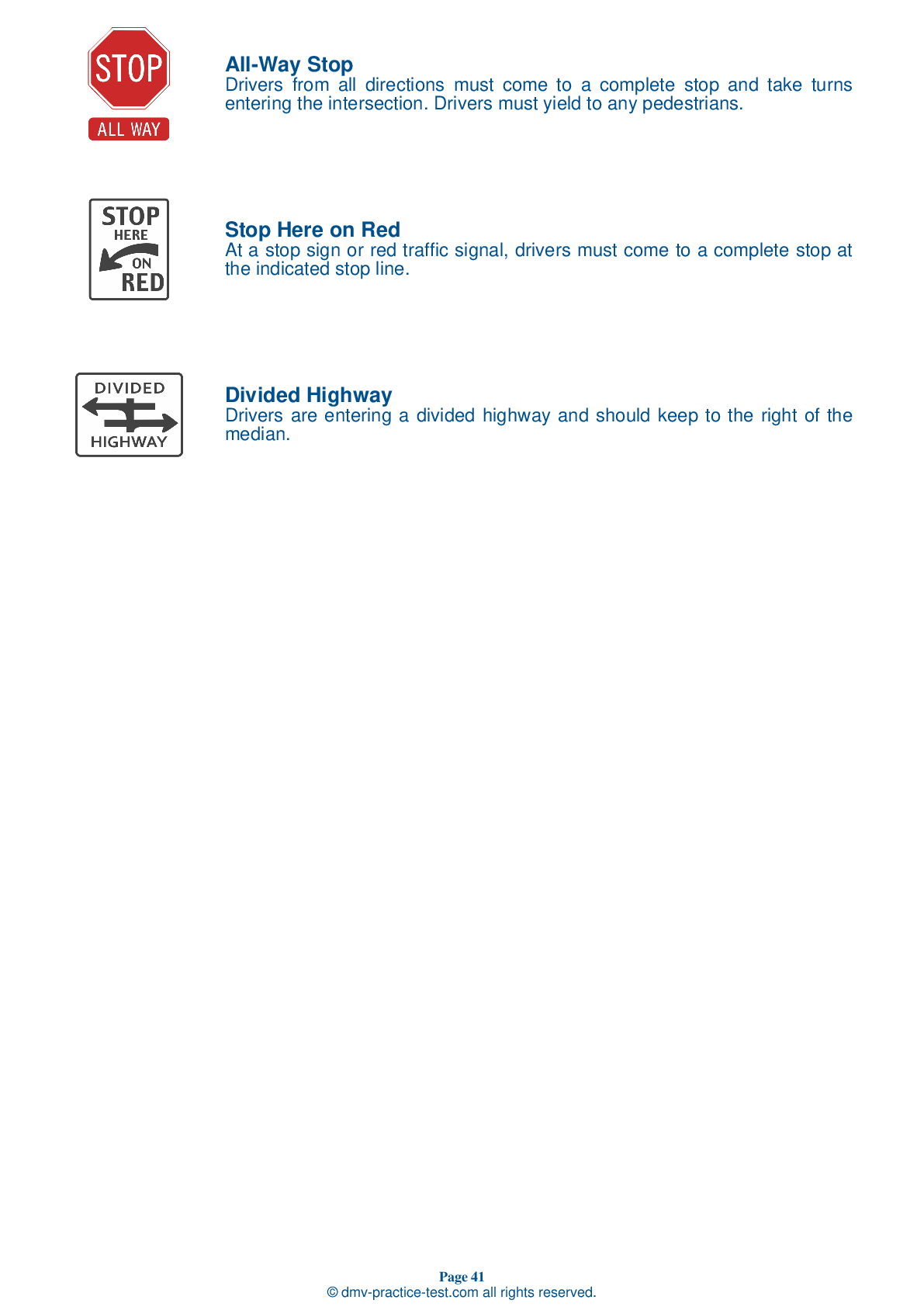Motorcycle Test | License NM 2025 | FREE Online Practice! #10 Page 3 of 4
Take this FREE motorcycle test (license in NM 2025) to check your knowledge of the road rules. To improve your results, download a motorcycle handbook online, study theory, and practice for free on our website. Still worried about how to get a motorcycle license in New Mexico in 2025? Check our website for more sample tests, train as much as possible, and boost your grades!
13 . Passing and being passed when riding a motorcycle is not much different than when driving a car. However:
While the basic techniques for safely passing and being passed are the same as when driving a car, visibility is more critical when riding a motorcycle. The smaller size of a motorcycle makes it easier for you to disappear into another vehicle's blind spot, or for the driver to fail to notice you even if they are able to see you.
14 . Shifting to a lower gear produces an effect similar to:
Most motorcycles have a manual transmission. Downshifting to a lower gear will slow you down.
15 . When being passed, you should not move to the portion of the lane farthest from the passing driver because it:
Moving into the portion of your lane farthest from a passing vehicle is potentially dangerous because it could encourage the driver to return to your lane before it is safe to do so. It is safest to stay in the center of a lane when being passed.
16 . If attempting to brake in a curve, you should:
Because tires have less traction when a motorcycle is leaning than when it is upright, always try to position your motorcycle in an upright position before braking. If you must brake while in a curve, apply the brakes more smoothly and gradually than if your motorcycle was traveling on a straightaway.
17 . A group of riders should pass another vehicle:
On a two-lane highway, a group of riders should pass another vehicle one at a time. The second rider should not begin to pass until the first rider has safely re-entered the original lane. Riders should continue in this pattern until they have all safely passed the vehicle.
18 . When approaching an object or uneven surface that you cannot avoid, you should:
If you cannot avoid riding over an obstacle or uneven surface, you should approach it at as close to a 90-degree angle as possible. Slow down as much as you can, make sure that your motorcycle is upright, and rise slightly off your seat so your knees can absorb some of the force of impact. Just before contact, roll on the throttle slightly to lighten the front end.
See the exact questions that will be on the 2025 New Mexico DMV exam.
99.2% of people who use the cheat sheet pass the FIRST TIME
Jeneen was tired of paying $5/gallon. She got herself a scooter that required the motorcycle license. She studyed the motorcycle test cheat sheet and passed her test the next day!
Christopher tells us how he knew nothing prior to obtaining the motorcycle study guide, and he only got one question wrong because he clicked on the wrong answer by mistake.



